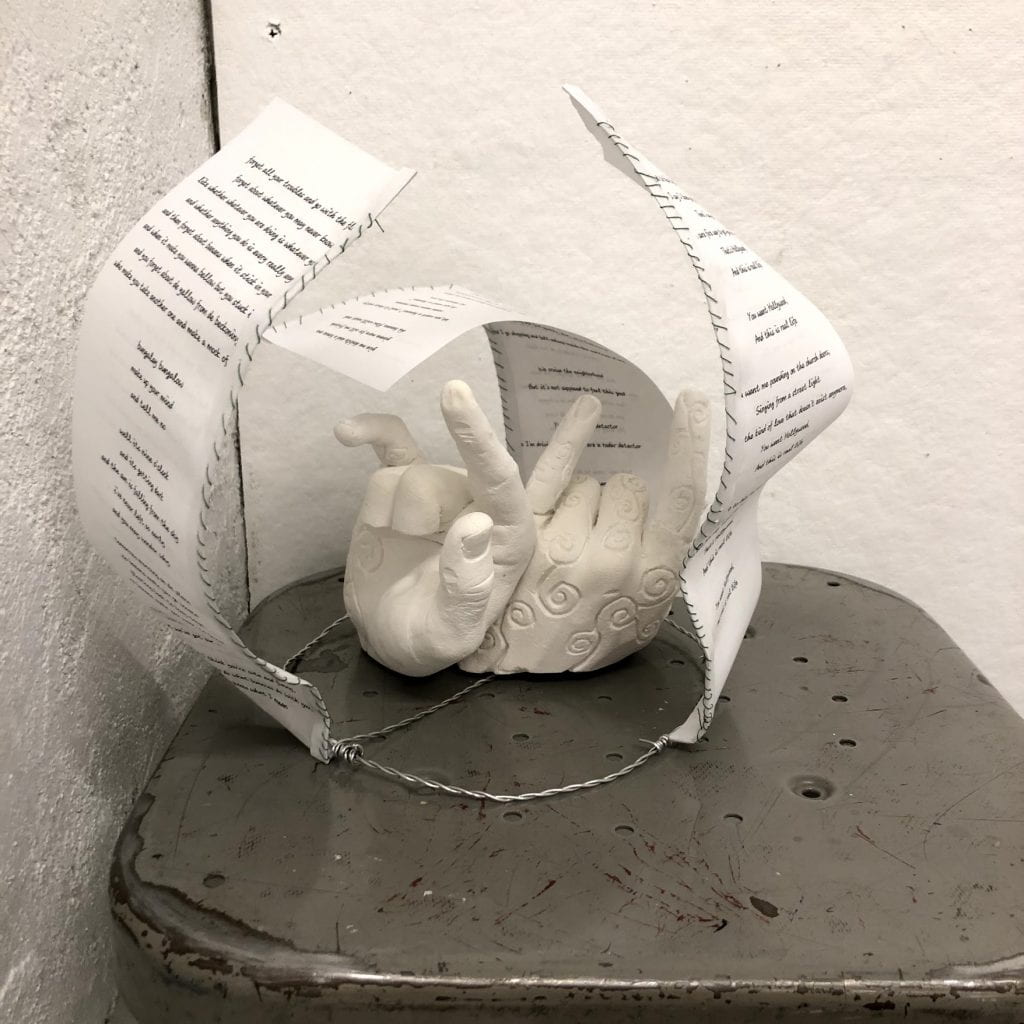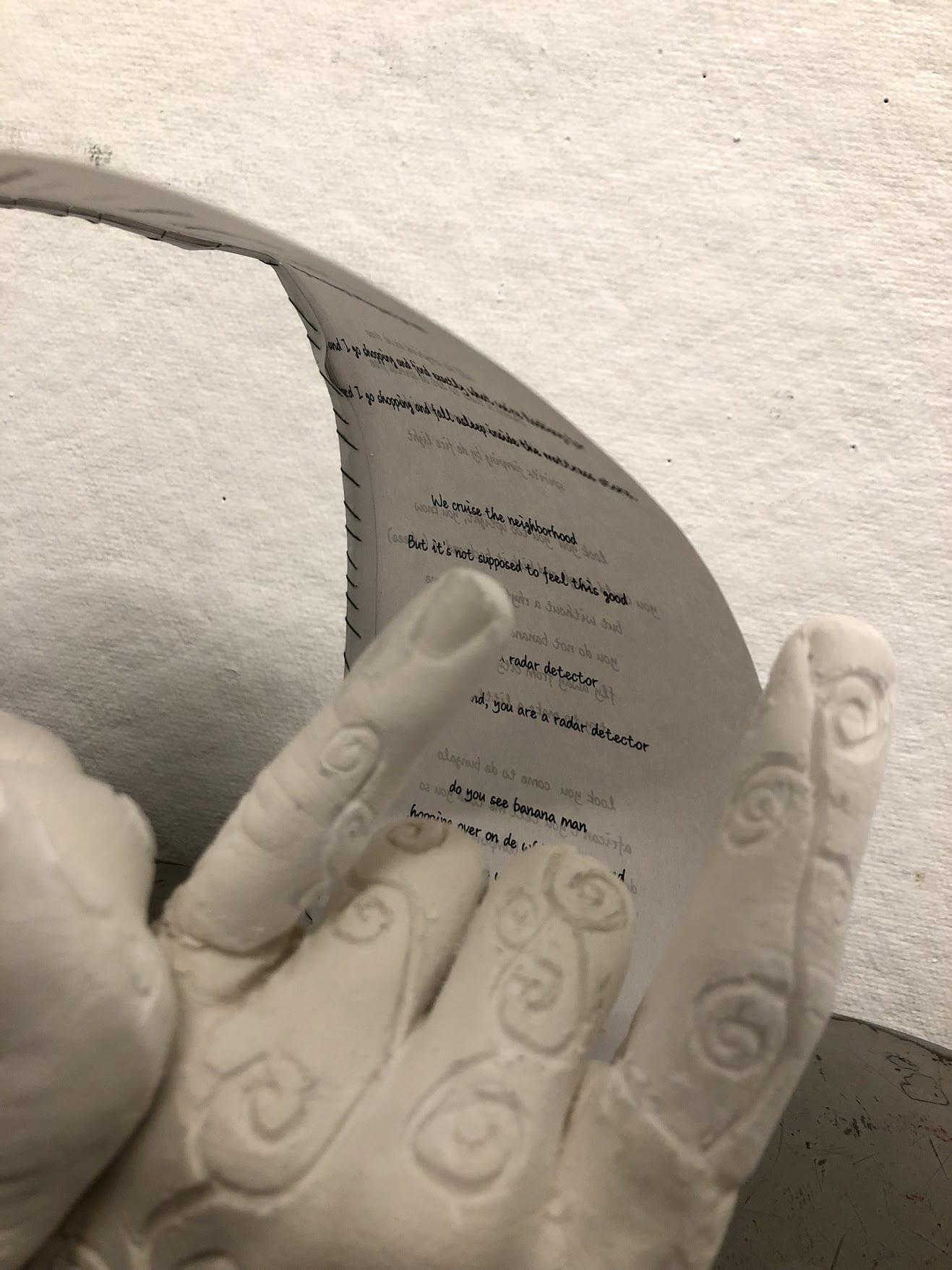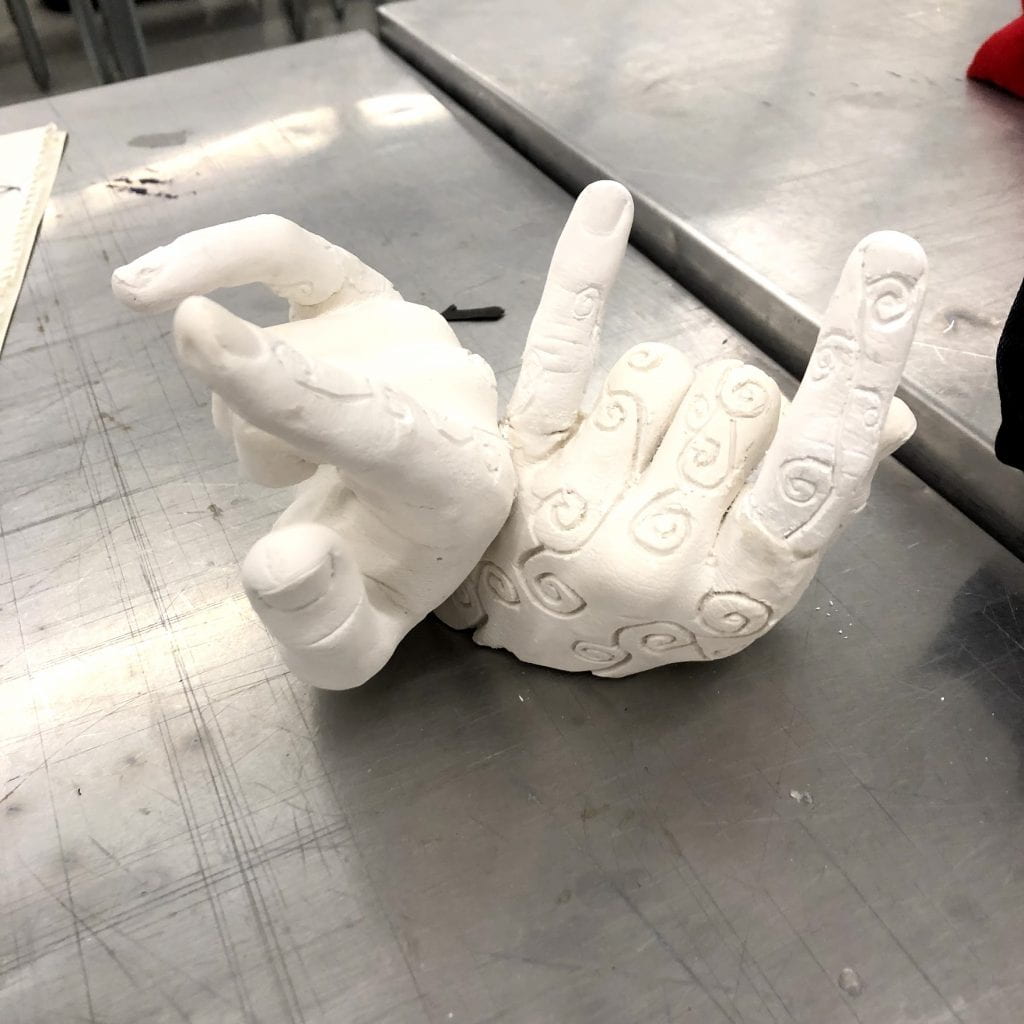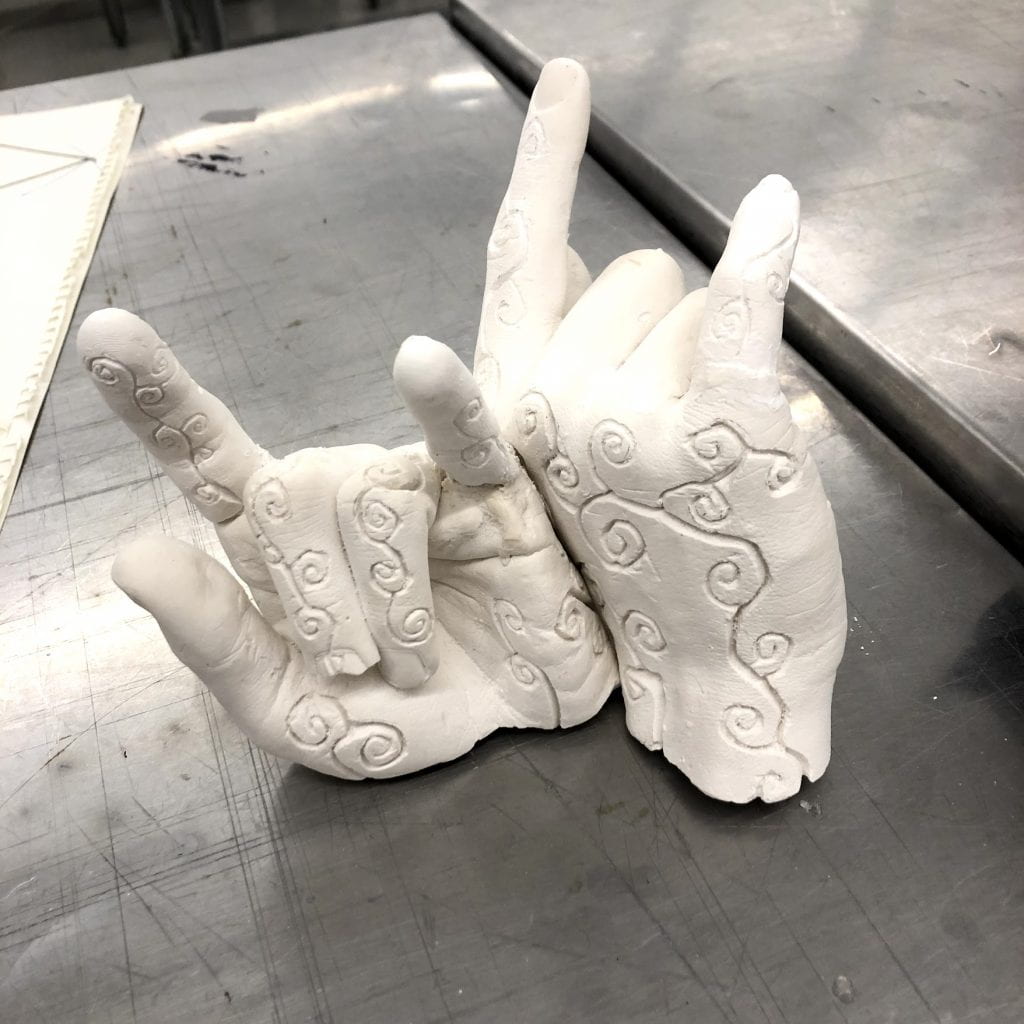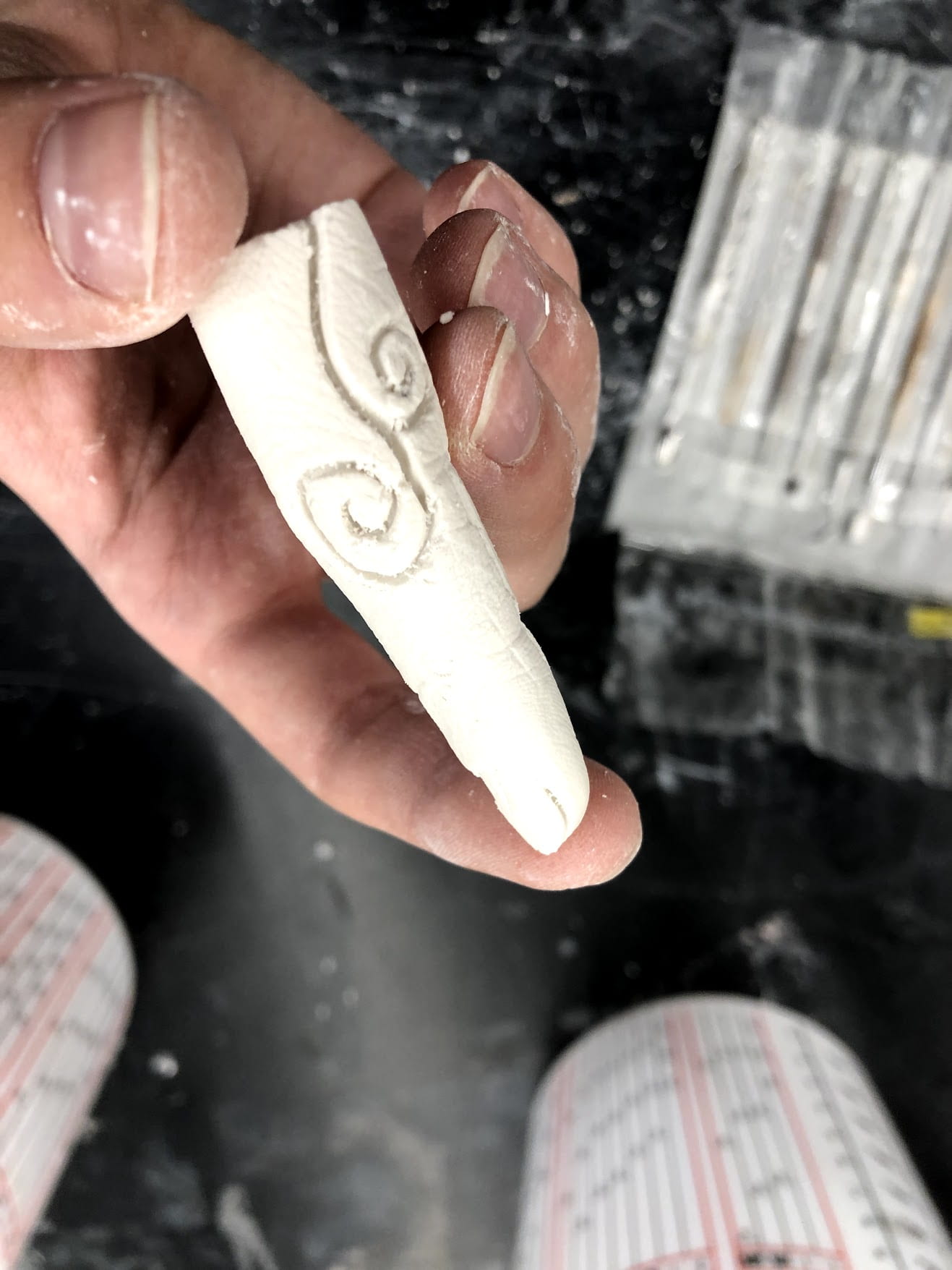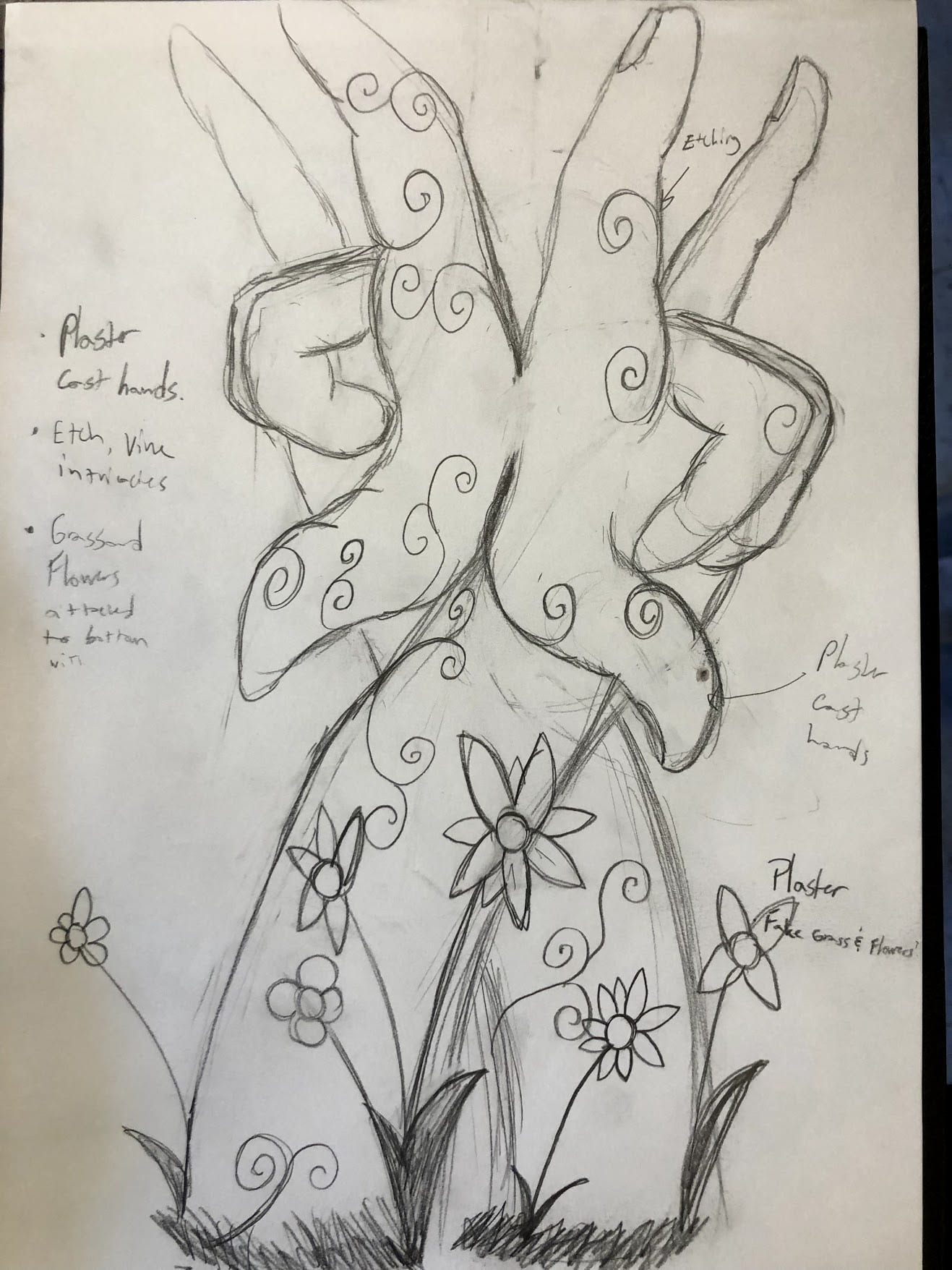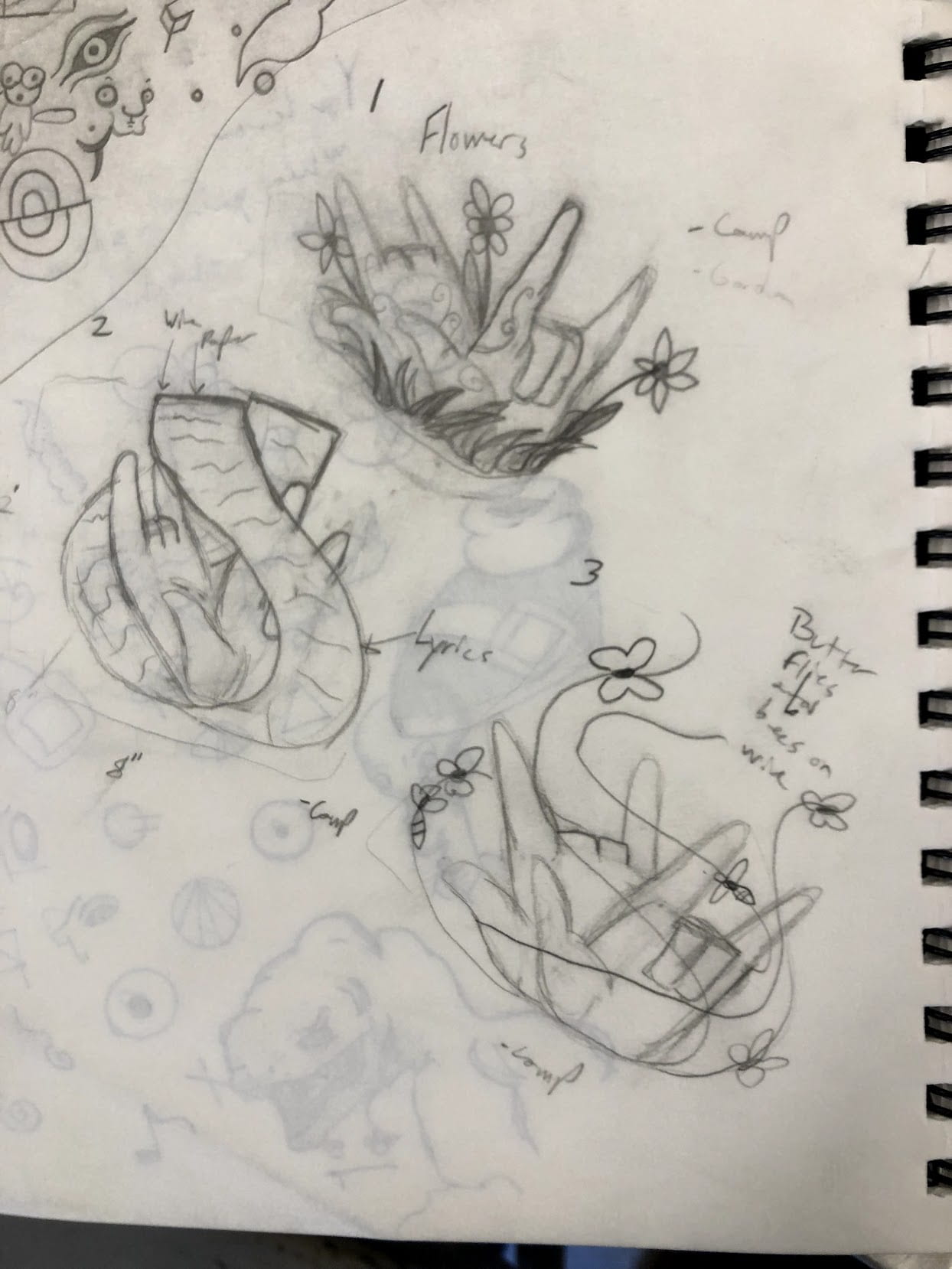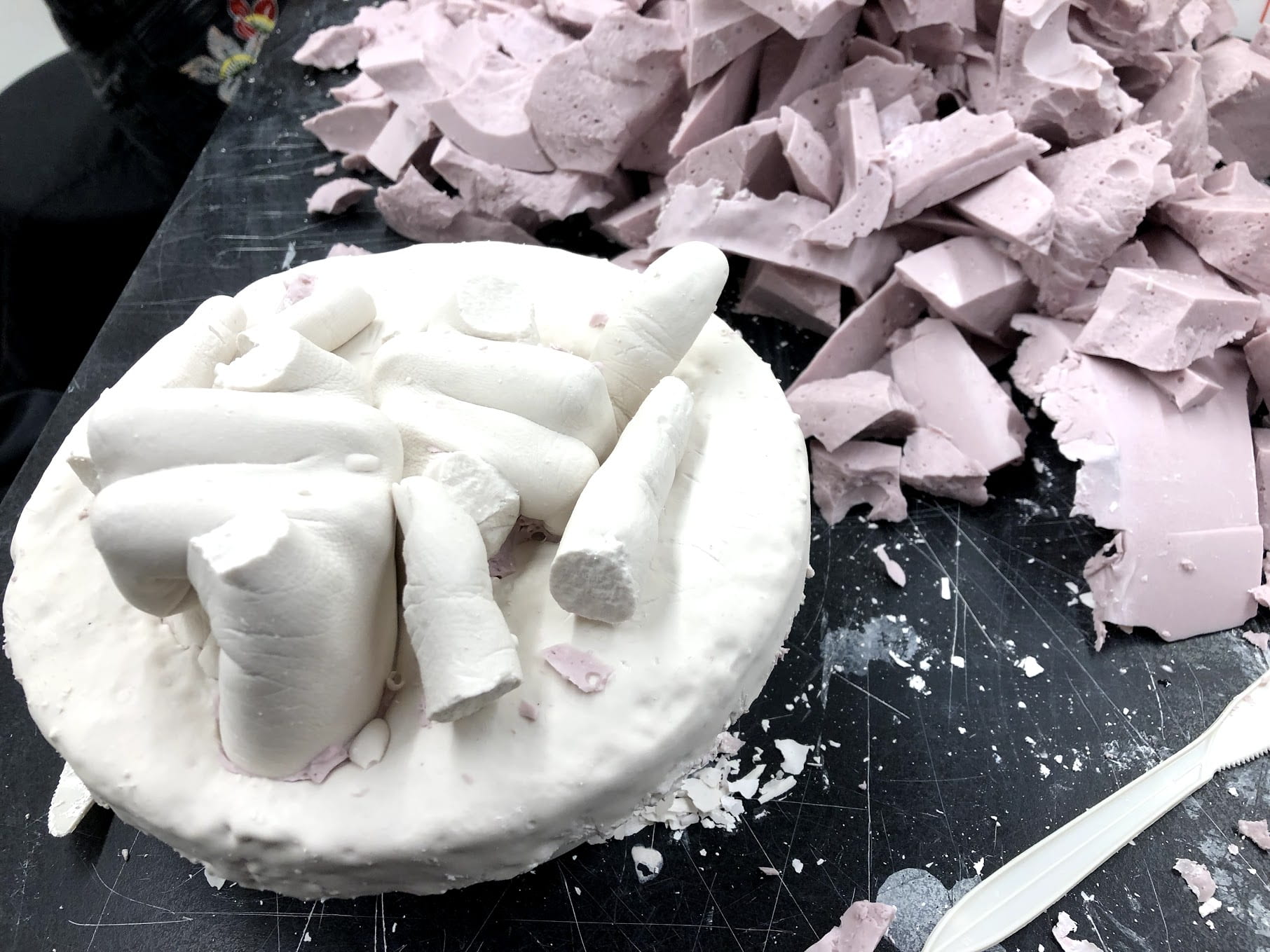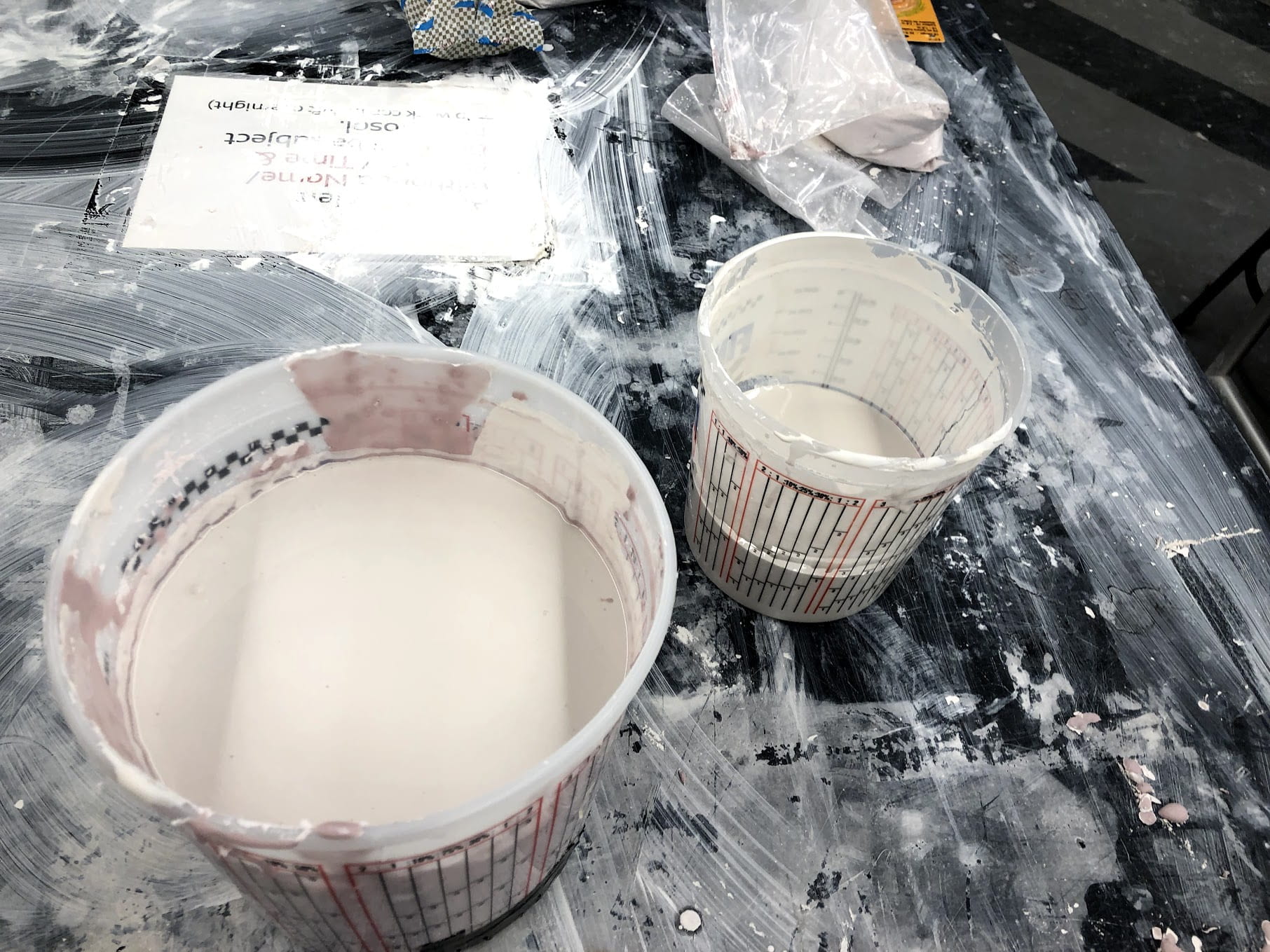“Ditto”
Plaster, Wire, and Paper
11x8x8 inch.
- Write a short poem using any form (including free form) in which you evoke the
nature/feelings/character/atmosphere/sensations of the memory you cultivated through the making of your project.Your response here should be creative and specific, with the only guideline being that you should not relate a narrative. Instead of laying out a narrative or timeline, allow the memory to unfold through phenomena, space, material, embodied experience. Use adjectives, verbs, and nouns from your memory chart and proposal to evoke a sense of embodied experience and a sense of place.
“I love you” a silent message projected through space, through the fresh summer air, careful to only fall on the ears of the intended. This message creates a silent message sent through that warm air, made warmer with the happiness and love of nostalgia in the making. It is loud yet quite, and it is far but made close. It becomes a light of that summer life, lighter than the chirping of the birds or the laughter of the playing children.
- Part 1:Describe your process of making an alginate body mold and a plaster cast, and explain when and how in that process you altered the cast including how you decided on the gesture, orientation, and alteration process. Explain any material choices you added to the plaster.
I used the alginate and plaster cast method on my own hands. This was important as well as the gesture itself, which is a key part of the memory. The orientation of the two hands is important because they are leaning on each other to achieve balance, which is a theme throughout the whole piece. The alteration to the cast came after the whole process, I carved vine like markings into the hands, giving it a natural growth like appearance.
- Part 2: What kind(s) of inhabitable space(s) in the real world inform the inhabitable space you made? Carefully and specifically describe the structure, materials, processes that you used to make your inhabitable space. Describe how these choices contribute to the quality, character, psychological state, sensations, and atmosphere you would like your inhabitable space to evoke from your memory.
I didn’t want my inhabitable space to represent a real-world space. I created a inhabitable space based around a feeling. It is created around a feeling of nostalgia and love. The free flowing look to the paper and the words on them create this feeling, and they surround the hands, almost protecting them.
4.Write about two specific ways your work for this project relates to the work of artists we studied for this project, which include artists from the videos, the readings, and class lecture (reference The way we make, makes our world, and in turn, re-makes us. sure you include each artist’s name (ask if you cannot remember), and make sure to explain the reference you arnd making beyond obvious formal features.
The Donald Kuspit reading about creating inhabitable spaces helped me immensely. It helped me define what a inhabitable space could be and what it does to help a piece. They don’t have to be actual boxes but they can surround the piece and in addition to what they can physically be, the can cause a sensation in the minds of viewers. It causes an innate sense of curiosity because it would appear that the piece is being hidden by the space.
- Part 1 and Part 2: Discuss the design elements of mass, texture, and volume and their relationship to each other in your project.
There is a flowing, naturalistic texture throughout the cast and inhabitable space. The flow of the paper matches the flow of the vine designs on the hands. There is also a flexible volume that changes based on the angle you look at it from.
- How does the design principle of repetition play a role in the organization of space or material in your project?
The vine designs on the flow of the paper are a aspect of repetition in the piece.
- Explain how you tailored your inhabitable space to your cast, or how you customized a space specifically for your cast to inhabit (discuss ergonomics, contact points between structure and cast, the relationship between surfaces, the size of the space, and the proportion of negative space to your altered cast).
My inhabitable space surrounds and almost hides the cast. The wire allows for a distance between the space and the cast, so that it is surrounded but not touching.
- Discuss how and where in the classroom you presented your finished project 2, and why you chose to display your piece that way.
It was put in a corner on a stool, with no special colors. I wanted it to almost blend it. The piece was private, it’s not supposed to be on display, but if you look at it, it’s beautiful.
- Discuss other important aspects of your project not mentioned above, such as how you delineated interior/exterior space, how you designed a threshold, how energy flows into, through, and out of your piece, how senses besides sight are involved in experiencing your project, how you used light or color, or anything else you wish to discuss.
The flow of energy is very naturalistic in this piece. It is meant to evoke nostalgia from those viewing it, though the symbols and lyrics may not be nostalgic to them in particular, but it will remind them of their own nostalgic memories.
- To you, what is the most important or exciting aspect of your project or your process for this project?
The gesture and the lyrics are the most important aspects because they have a deep personal meaning
